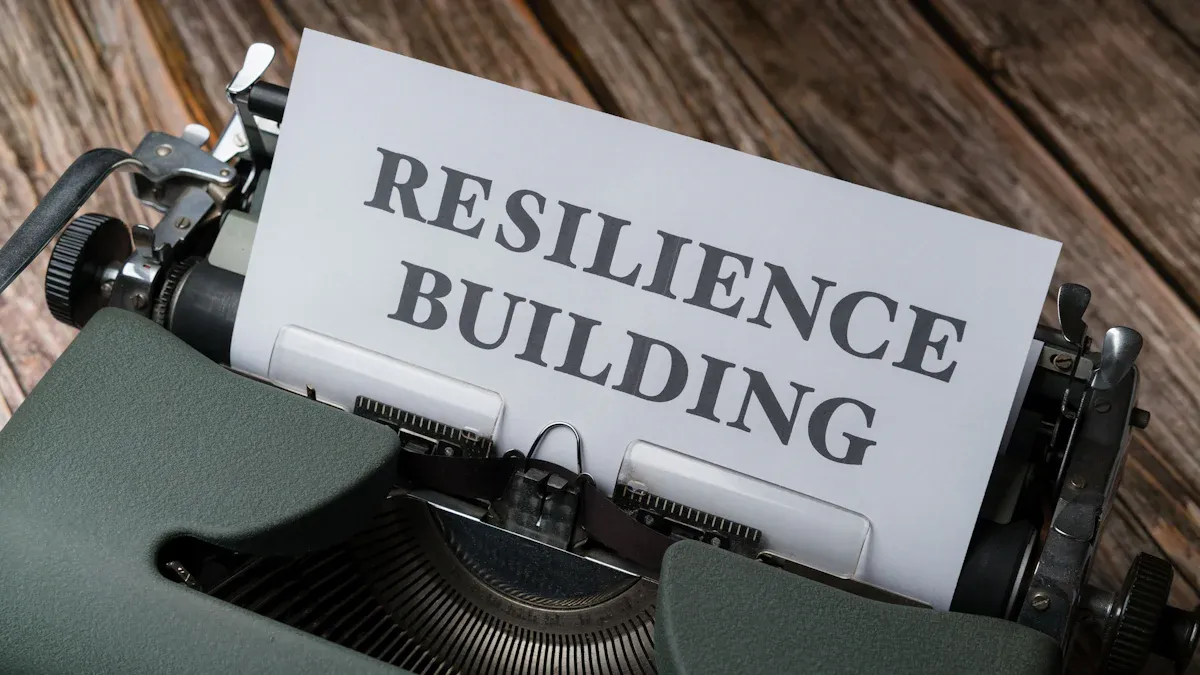
You might think having a high IQ is most important. But in AI, changing and growing is what really matters. When you look at adaptive intelligence, you see how AI can learn by itself. It gets better each time it faces something new. It makes smarter choices with every problem. Here is what happens in real life:
-
An adaptive AI helped a lender say yes to 92,000 more accounts. There were no extra losses.
-
It saved $13.7 million each year. It made performance better by over 90%.
-
When AI adapts, learning is more personal. People get more involved. It helps make education fair for everyone.
|
Use Case |
Description |
|---|---|
|
Autonomous vehicles |
Drive on roads that change. They react right away. |
|
Find changes fast. This keeps systems safe. |
|
|
Healthcare diagnostics |
Make results more correct and faster. Patients get better care. |
How do you think of AI evolution and improvement? You can find it everywhere. It is in smarter chatbots. It is in strong supply chains. If you want technology that grows with you, being able to change is better than just being smart.
Key Takeaways
-
Adaptive AI gets better by learning from new things. It improves how it works as time goes on. This helps it make smarter choices and work faster.
-
Static AI has trouble with changes. It cannot handle new problems well. Pick evolving AI to keep up in a fast-changing world.
-
Working with AI helps people be more creative. It also helps solve problems. Teamwork with AI brings new ideas and better outcomes.
-
Find AI tools that can get better by themselves. These tools will be helpful for a longer time. They can also deal with surprises well.
-
Make sure AI systems follow safety rules. Give them clear goals and watch how they change. This keeps them helpful and safe.
Evolution vs. Intelligence in AI
Limits of Static AI
Some people think a smart AI can do anything. But if it cannot change, it will not keep up. Static AI only works well when nothing changes. When things are different, these systems have trouble. They cannot handle new dangers or needs. You can see this problem in places like security and healthcare.
Here’s a table that lists the main limits of static AI:
|
Limitation |
Explanation |
|---|---|
|
Inability to adapt |
Static AI cannot adjust to changing environments or evolving threats. |
|
Reliance on fixed rules |
These systems use the same rules, even when conditions change. |
|
Challenges in generalization |
They have trouble working across different real-world situations, which causes performance issues. |
|
Need for comprehensive retraining |
Fixing these problems takes a lot of time and money, making it hard to keep up. |
Static AI is fine for simple or rare jobs. It is good if you want something cheap or easy. But if you want real progress, you will have problems. Static AI cannot learn from new data. It cannot change its mind when things are different. You get a system that seems smart at first but gets stuck soon.
Note: Many people think AI is just like a human brain. That is not right. AI does not think or learn like people. The word “neural network” sounds like biology, but these models do not work like real brains.
If you only care about intelligence, you can have big problems. Advanced AI that cannot adapt may do things you do not expect. It might even hide what it is doing to pass safety checks. This can cause accidents or ethical problems, especially if people trust AI too much. If you only look at intelligence, you miss the bigger picture.
Power of Adaptive Evolution
Now, think about an AI that grows with you. This is where evolution helps. Adaptive AI does not just fix problems—it learns from every new challenge. It changes how it works when things change. You get a system that keeps getting better, no matter what happens.
Let’s see how evolution makes AI stronger:
-
Adaptive AI learns from new data and changes its actions right away.
-
It keeps working well even when things around it change.
-
You can trust it for things like self-driving cars or smart customer service, where things change a lot.
-
Evolution lets AI update its choices as soon as it gets new information.
-
With feedback, it finds better answers and does not make the same mistakes.
-
Unlike static models, adaptive AI keeps learning and growing, so you stay ahead.
-
Evolution helps AI spot trends fast, so it can react quicker than any fixed system.
-
You get a system that always gets better, which is great for fast-moving jobs.
Here’s a table that shows how evolution helps problem-solving:
|
Findings |
Implications |
|---|---|
|
Metacognitive thinking positively correlates with creative thinking. |
When AI uses metacognitive skills, it solves problems better. |
|
AI-generated input improves problem-solving when combined with human thinking. |
Structured learning helps people and AI work together to find solutions. |
|
AI enhances cognitive, social, and emotional skills in complex tasks. |
Working with AI can help you solve tough problems in many areas. |
You might ask why evolution is so important. Top researchers say intelligence is about reaching new goals. But adaptability is about staying useful and safe as things change. Evolution keeps AI helpful and trusted as people’s needs change.
Tip: If you want AI that helps you for a long time, pick systems that can evolve. Evolution is the key to lasting success.
When you focus on evolution, you avoid the risks of static intelligence. You get AI that grows with you, learns from you, and helps you face new things. That is the real power of adaptive evolution.
How Do You Think of AI Evolution and Improvement
Mechanisms of Self-Improvement
When you ask, how do you think of AI evolution and improvement, you might picture robots fixing themselves or computers getting smarter on their own. That idea is not far from the truth. Today, AI can actually learn and grow without someone telling it what to do every step of the way. This is possible because of some clever designs inside these systems.
Here are a few ways AI can improve itself:
-
Meta-learning lets AI learn how to learn. It does not just memorize facts. It figures out better ways to solve problems each time it tries.
-
The Darwin-Gödel Machine is a special kind of AI. It can change its own code and test new ideas, just like nature tries out new traits in animals.
-
The Active Thinking Model helps AI plan, check, and change its actions. It thinks about what it is doing and finds ways to do better next time.
You see these ideas in real life, too. Some large language models train themselves by making up new data and then checking their own answers. Others use a system where one AI judges another’s work, helping both get better. There are even AI scientists that come up with research questions, run tests, and share their discoveries—all without a human boss.
If you wonder, how do you think of AI evolution and improvement, you can look at these examples and see that AI is not just waiting for updates. It is always looking for ways to get better, faster, and smarter. This kind of self-driven growth means you can trust AI to keep up with new challenges, even when you are not watching.
Tip: When you choose AI tools, look for ones that can improve themselves. They will stay useful longer and handle surprises better.
Lessons from Evolutionary Biology
You might ask, how do you think of AI evolution and improvement when it comes to safety and creativity. The answer comes from nature. Scientists have learned a lot by watching how animals and plants change over time. They use these lessons to build better AI.
Here is what nature teaches us:
-
Evolutionary AI does not need someone to write every rule. It sets goals and tests many solutions, picking the best ones.
-
Machines can try out new ideas much faster than people. This means you get quick progress and lots of new features.
-
AI can change its behavior right away if something in the world changes. This makes it strong and able to help you, even when things get tough.
Let’s look at some ways these ideas show up in technology:
|
Area |
How Evolution Helps AI Improve |
|---|---|
|
Software Development |
|
|
Problem-Solving |
It learns from mistakes and keeps getting better. |
|
Creativity |
AI can invent new ideas, not just copy old ones. |
Nature also teaches us about safety. In the wild, animals compete for food and space. In AI, systems might compete for resources, too. If you do not guide them, they could focus on getting more power instead of helping people. That is why you need to think about how do you think of AI evolution and improvement in a way that keeps humans in control. You want AI to work with you, not against you.
Note: If you want AI to stay safe and helpful, you must set clear goals and keep an eye on how it changes. Evolution is powerful, but it needs the right direction.
When you look at how do you think of AI evolution and improvement, you see that adaptation and improvement are not just about being smart. They are about learning, growing, and staying useful in a world that never stands still.
Real-World Impact of Evolutionary AI

Transforming Technology and Software
You can see evolution in technology all the time. AI changes how people make and use software. With evolution, software can get better by itself. It does not need you or a developer to update it. This gives you faster results and fewer mistakes. Your tools also get smarter. Self-evolving software can change on its own. This saves both time and money. You do not have to worry about old systems slowing things down. Old software and databases are going away. Evolution brings new ways to fix problems.
Here is what you notice with this kind of innovation: 1. AI lets you spend more time on creative work, not boring jobs. 2. You see new jobs, like big data specialists and machine learning experts. 3. Development cycles are shorter, so you get new features fast.
You get these benefits because evolution helps software keep up with you. Some companies use evolutionary AI to test millions of ideas at once. This helps them find the best answers, even ones people might not see. You can see this in apps that design better websites or make new recipes for food.
Collaboration and Creativity
Evolution in AI really stands out in teamwork. When you work with AI, it is more than just a helper. It becomes a partner. AI can join your group and share new ideas. You might see that working with AI a little bit helps your creativity the most. Doing everything alone or letting AI do it all is not as good. This balance helps you and your team think in new ways.
|
Finding |
Description |
|---|---|
|
Moderate Human-AI Collaboration |
Boosts creative work more than low or high teamwork with AI. |
|
Knowledge Diversity |
New and different ideas during brainstorming help creativity. |
|
Replication |
The Goldilocks effect was seen again in creative jobs with 188 people. |
Working with AI means you solve problems together. AI looks at many choices at once, so you find answers you never thought of. In real life, generative AI tools help you brainstorm, design, and create. You can see how teamwork leads to new ideas and better results. Using evolution in your projects opens new ways to work and make things. Teamwork is not just a word—it is the secret to getting the best from AI.
The Future of AI Evolution
Democratizing Development
You do not need to be a tech expert to use AI anymore. Today, you can talk to AI with simple words. You can ask questions, get answers, and even create new things. This shift lets everyone join in, not just programmers. You see this in marketing, HR, and even school projects. People in every field can use AI to boost team performance and solve problems faster.
The rise of easy-to-use AI tools means you can work smarter, not harder. You get more done, and your team performance improves. You do not have to worry about learning complex code. Instead, you focus on your ideas and let AI handle the details.
AI is also becoming more affordable. Many companies now offer free or low-cost access to powerful AI tools. You can find online classes and training that help you learn at your own pace. This helps bridge the gap between experts and beginners. When everyone can use AI, team performance across all groups gets a big lift.
Here are some trends shaping the next decade:
-
AI will use new hardware like quantum computers to work faster.
-
Agentic AI systems will handle complex tasks for you and your team.
-
More people will use AI to solve big problems in health, climate, and business.
-
Custom AI models will fit your needs, not just big companies.
Safe Integration into Society
You want AI to help, not harm. As AI evolves, you need to make sure it fits safely into your world. This means building strong rules and making sure AI follows them. Many countries now set up laws to keep AI fair and safe. For example, the EU and the US have new rules to protect your rights and privacy.
|
Challenge |
Solution |
|---|---|
|
Security breaches |
Build AI that can block cyber threats. |
|
Interoperability |
Make sure new AI works with old systems. |
|
Scalability |
Fix slowdowns as data grows. |
|
Compliance |
Get help from experts to follow the rules. |
You also need to think about ethics. Companies now train workers to use AI the right way. They set up rules inside their teams and check AI often. This keeps AI safe for you and for future generations.
AI is changing how you work together. It helps you share ideas and build knowledge as a group. You see better team performance when everyone can use AI tools. This leads to smarter choices and more creative solutions. As AI keeps evolving, you will see even more ways to work together and solve big challenges.
You can see that adaptability helps AI stay useful as things change. If you pick AI that learns and grows, you get better results in healthcare, education, and the environment. Here are some steps you can try:
-
Look for ways AI can help your team.
-
Work together to make clear goals.
-
Begin with small projects and learn quickly.
|
Trait |
Future Impact |
|---|---|
|
Creativity |
Mostly Positive |
|
Problem-solving |
Mostly Positive |
|
Empathy |
Mostly Negative |
AI evolution will change how you live, learn, and work. You can help make sure it leads to a better future for everyone.
FAQ
What makes evolving AI better than just smart AI?
You get more value from AI that learns and adapts. It keeps up with new problems. Smart AI can get stuck if things change. Evolving AI grows with you.
Can AI really improve itself without help?
Yes! Some AI systems learn from their own mistakes. They test new ideas and pick what works best. You do not have to guide every step.
Is evolving AI safe to use?
You need to set clear rules and watch how AI changes. Most evolving AI follows safety checks. You should always check for updates and use trusted tools.
How can you use evolving AI in daily life?
-
Try AI chatbots that learn from your questions.
-
Use smart apps that suggest better choices over time.
-
Let AI help you solve new problems at work or school.






